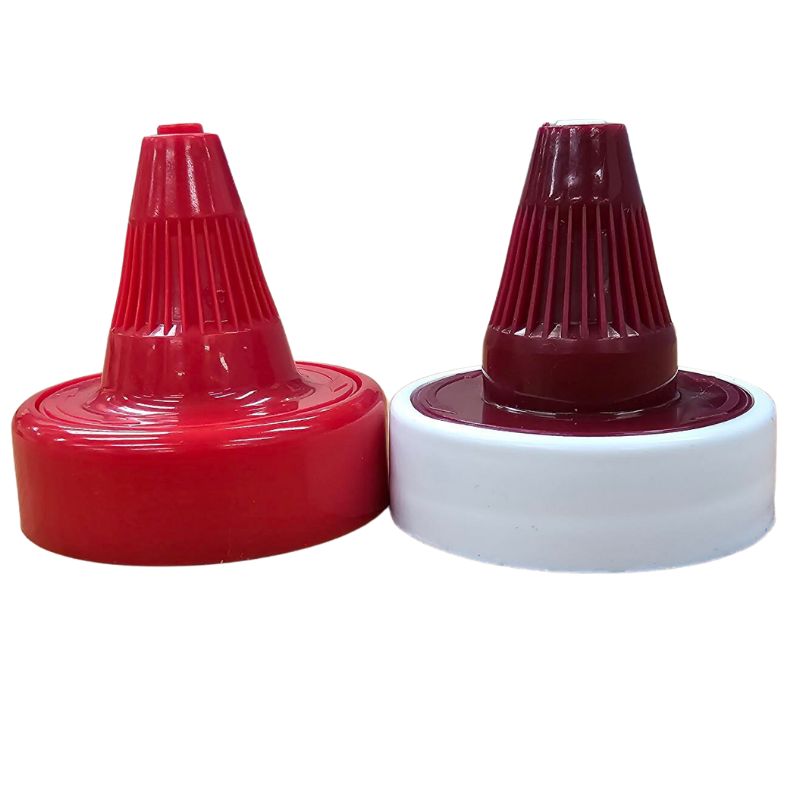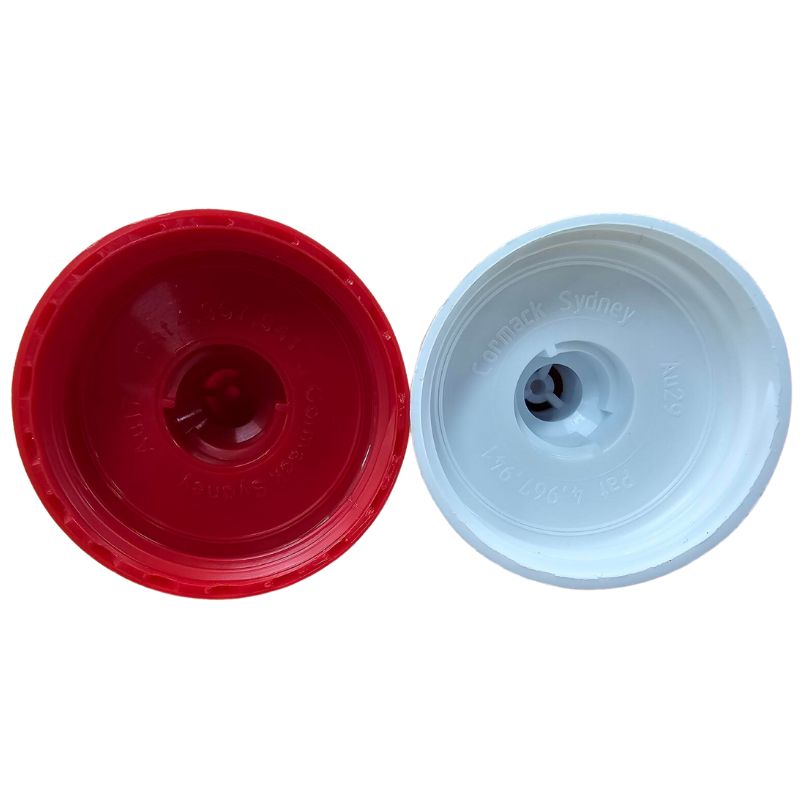When a threaded closure is formed in the closure tool the closure is very warm (>40°C) as it leaves the mould. A warm closure will be easily damaged until it has cooled to around 21°C. The closure threads can easily be damaged while they are warm.
Older made tools (>7 years old) will unscrew the closures to allow them to exit the mould. These tools will have a form of gearbox or toothed rack that rotates each threaded core so that the warm thread unscrews from the cavity without damage. This is particularly important on talc filled closures as the resin is not pliable and will crack if pressure applied during part removal.
For unscrewing tools, the closures need a relatively thick wall section that has some form of teeth in the base of the closure. These teeth are then used to hold the closure in a set position whilst the inner core is turned to unscrew the closure. Once it has cleared the core the closure can then drop from the mould. These closures will have a fully formed (rounded) thread with sharp angles. The downside of this format is that the closure will be relatively heavy, and it may take an additional three seconds of cycle time to allow for the unscrewing sequence.
With the advent of random co-polymer resins and improvement in tool designs, we no longer need to talc fill these closures to prevent stress cracking. The closures can now be forcefully pushed out of the mould without the need to be unscrewed. This requires a thinner (more pliable) outer wall of the closure and does slightly “wipe” the threads so the very tip of the thread has a slightly flat top, and the resultant thread profile will not be as sharp. The benefit is that these caps without talc filling are now fully recyclable, lighter in weight (less plastic) and the cycle time is shortened by possibly three seconds.
To use a jump moulded closure, it is important that the bottle has a good quality thread form, and the thread dimensions must be within the closure manufacturers stated tolerance.


